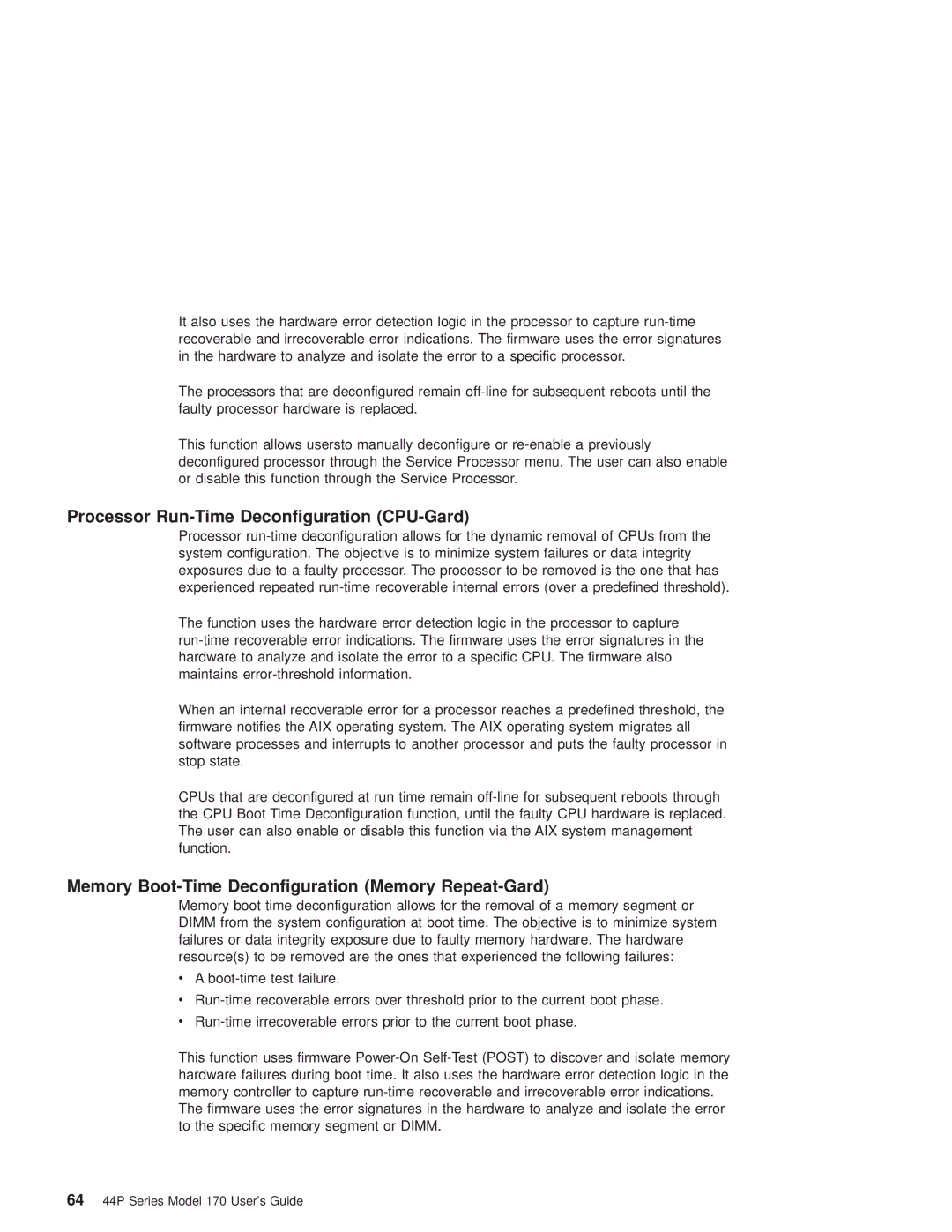It also uses the hardware error detection logic in the processor to capture
The processors that are deconfigured remain
This function allows usersto manually deconfigure or
Processor Run-Time Deconfiguration (CPU-Gard)
Processor
The function uses the hardware error detection logic in the processor to capture
When an internal recoverable error for a processor reaches a predefined threshold, the firmware notifies the AIX operating system. The AIX operating system migrates all software processes and interrupts to another processor and puts the faulty processor in stop state.
CPUs that are deconfigured at run time remain
Memory Boot-Time Deconfiguration (Memory Repeat-Gard)
Memory boot time deconfiguration allows for the removal of a memory segment or DIMM from the system configuration at boot time. The objective is to minimize system failures or data integrity exposure due to faulty memory hardware. The hardware resource(s) to be removed are the ones that experienced the following failures:
vA
v
v
This function uses firmware
The firmware uses the error signatures in the hardware to analyze and isolate the error to the specific memory segment or DIMM.
6444P Series Model 170 User's Guide
